When you think about homemade food in Japan, I’m sure that onigiri (おにぎり) will come to your mind. Although it is not as internationally famous as sushi (寿司), it is one of the most basic Japanese cuisine dishes.
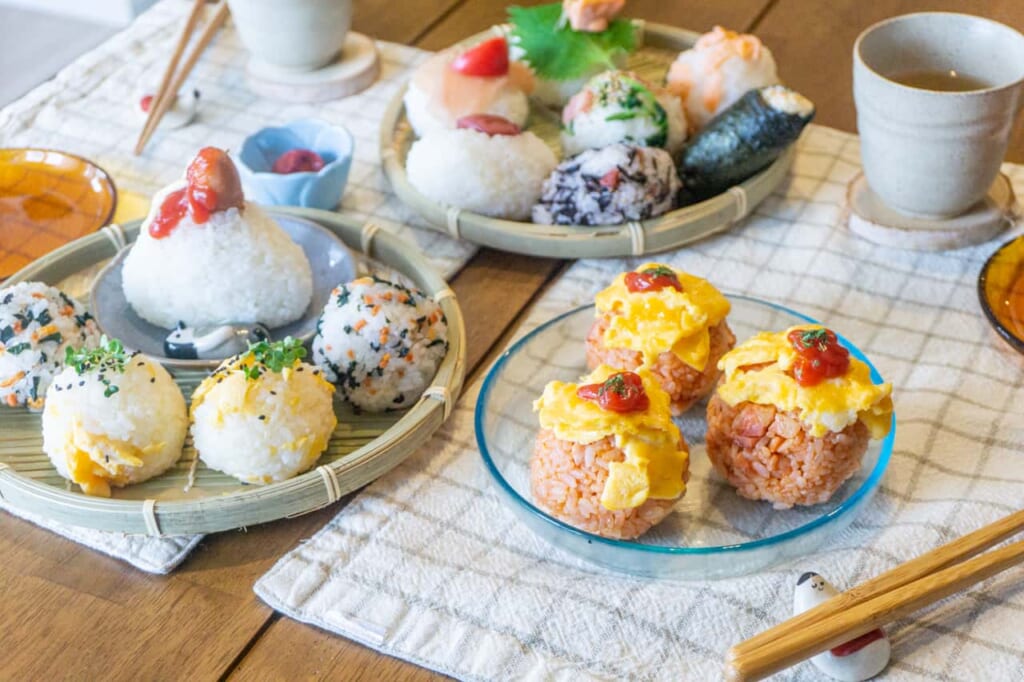
From onigiri you can buy in supermarkets to those you make at home, there is no doubt that it is a quick, practical and cheap dish for your home’s economy. And above all, it is delicious!
For those who wonder what onigiris are, here is the answer! Onigiri is a steamed Japanese white rice ball stuffed with some food. Moreover, you can cover totally or partially with a seaweed piece called nori (海苔) if you wish.
For a step-by-step guide on how to make onigiri at home, here’s the homemade onigiri recipe that several of our grandmothers shared with my family over the ten years we lived in Japan.
What Ingredients Do I Need to Make Onigiri?
- Steamed Japanese white rice.
- A bowl of cold water.
- Salt (you will need a pinch for each).
- Stuffing (it can be tuna salad with mayonnaise, canned sockeye salmon, umeboshi (salted Japanese apricot) or whatever you have in your home).
- Nori (Japanese seaweed).





How to Prepare an Onigiri
First, once you cook the Japanese rice in the rice cooker, open the lid to let it breathe and cool it enough to be handled with your hands. It is better to have salt, a bowl of cold water, and the filling nearby.
What kind of rice should I use to make Onigiri?
Onigiri is made with standard Japanese short-grain rice. It should be available online or from your local Asian supermarket. Don’t try to use long-grain rice like those from China or Thailand; they will just crumble due to lack of stickiness of the cooked rice.



Secondly, wet your hands with cold water and add a pinch of salt in the palm of one hand. Rub your hands together until the salt dissolves and take a fist-size portion of rice, spreading it over your hand. This trick is simple, but it’s a special touch to give onigiri this homemade flavour.


After that, add a teaspoon of the filling in the rice centre and carefully turn it into a ball. Once you see that the filling is not overflowing, continue to squeeze the rice ball with both hands to make a compact shape free of any loose grain.
You can also make onigiris by mixing the rice with canned food such as sockeye salmon, wakame (わかめ – a meatier type of seaweed) or umeboshi (梅干し), before shaping it.

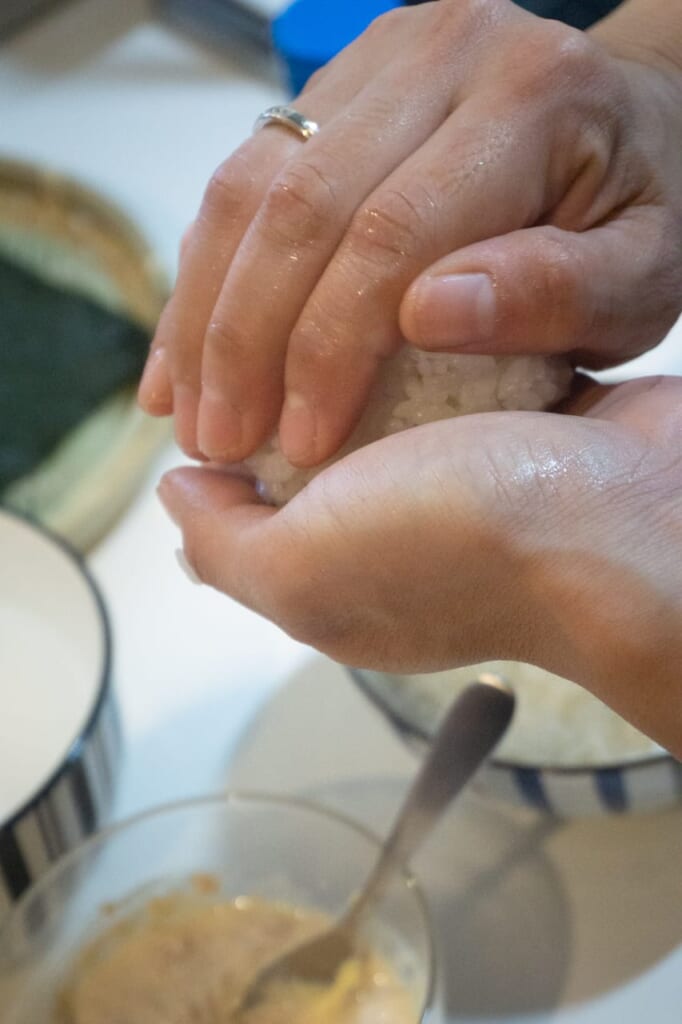

Once you’re done, wrap them with the nori seaweed. I recommend using soy flavoured seaweed from Kumamoto Prefecture (熊本県), as the taste and smell of this seaweed are not so strong and is crunchy and delicious. There are two ways to wrap the onigiris: you can cover them wholly or partially, either to the centre or just the base.
Should I use vinegar to make onigiri?
While rice vinegar is usually added to rice when making various kinds of sushi, vinegar is not needed to make onigiri. In fact, adding vinegar can reduce the stickiness of the rice and cause the rice ball to fall apart faster.
How to Wrap a Rice Ball
The way you wrap onigiri depends on the way you want to eat it. Some like to have stick nori to the rice, but some only want the nori as a touch of flavour wrapping only the onigiri base. Some prefer them unwrapped and eat the nori separately to savour the crunchy texture when eating.





The Rice Ball Variations Across Japan
Something curious about onigiri is that its shape depends on the location. For example, in Kyushu (九州 – the southeastern island of Japan), many people prefer triangular-shaped rice ball because they are easier to eat. However, in Tokyo, they like the rounded semi-oval onigiris, as they look more homemade. Whichever shape you choose, the important thing is to compress the onigiri well so that it doesn’t crumble. But at the same time, you have to avoid the rice losing their shape and becoming a pasty mass.
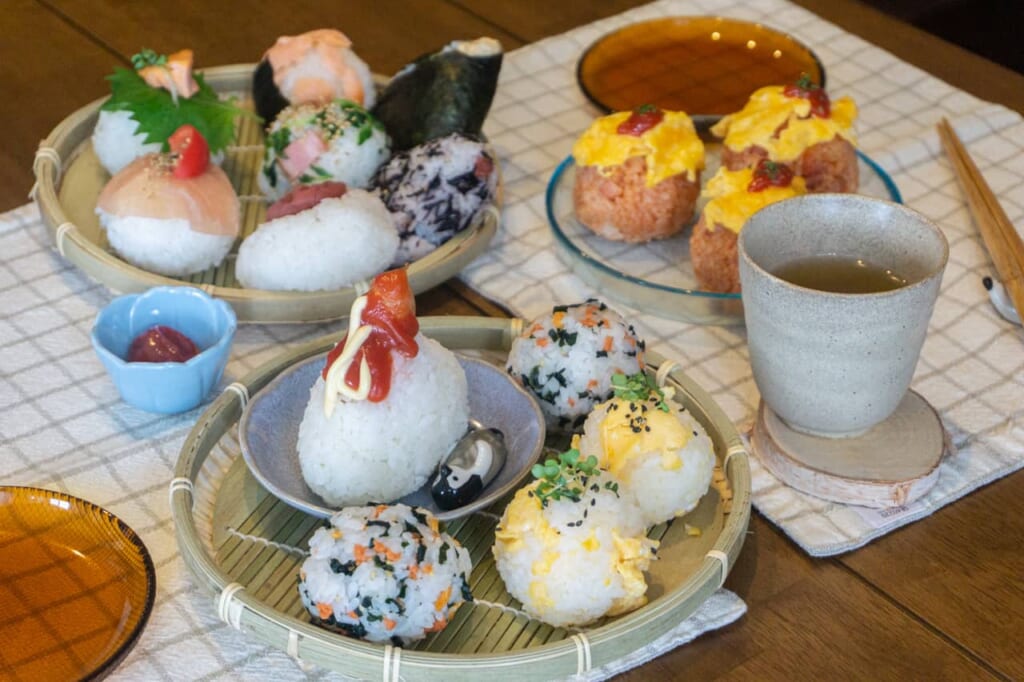
What Can You Put Inside Onigiri?
We can consider onigiris as the Japanese version of sandwiches since the content will depend on where you live and what you have at home. One classic filling is umeboshi, a pickled Japanese apricot. Other options can be the popular canned sockeye salmon and mayonnaise tuna salad filling.




Besides the traditional rice ball, you can also let your creativity go and add decorations or make more original shapes. As you have already seen, onigiris are made with rice along with your favourite food. As you can have thousands of combinations, you can come up with new ideas or use leftover food in your fridge.


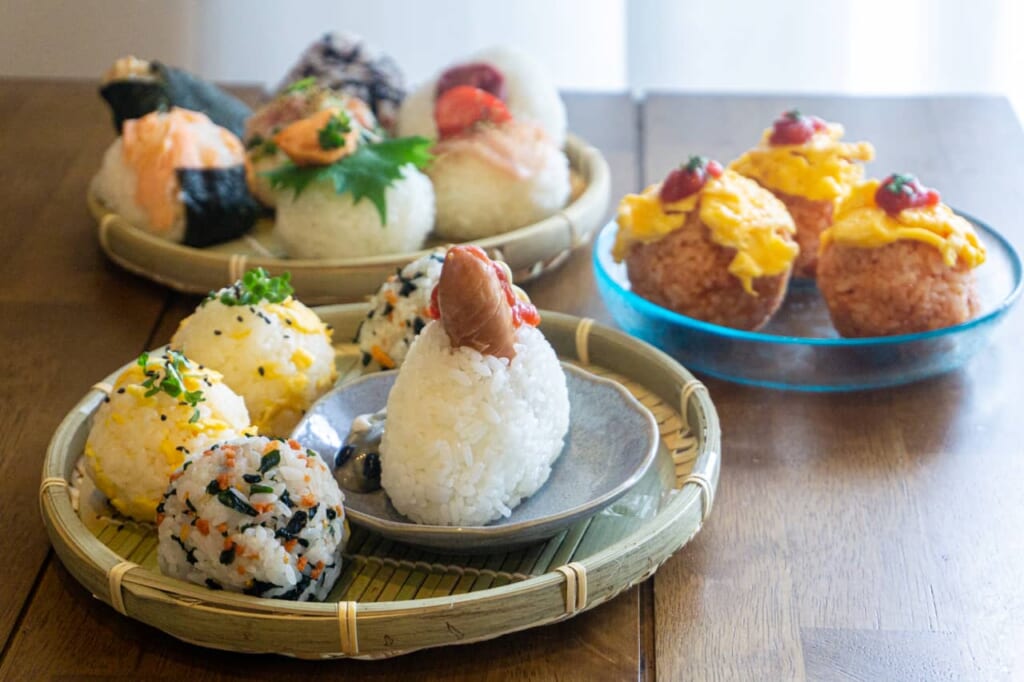
Different Types of Onigiri Rice Balls
If you want to know what kind of rice balls we made for these photographs, we leave you a list with the different flavours:
- Tuna and mayonnaise whole covered by nori seaweed.
- Hijiki seaweed and chopped umeboshi.
- Umeboshi (without the pit).
- Fried bacon with green sprouts.
- Onigiri with shiso leaf and a piece of grilled salmon.
- Grilled salmon with a strip of nori seaweed.
- Scrambled egg with sesame seeds.
- Salmon furikake with dehydrated seaweed.
- Sausage with ketchup and mayonnaise.
- Tomato, fried bacon and scrambled egg on to it.
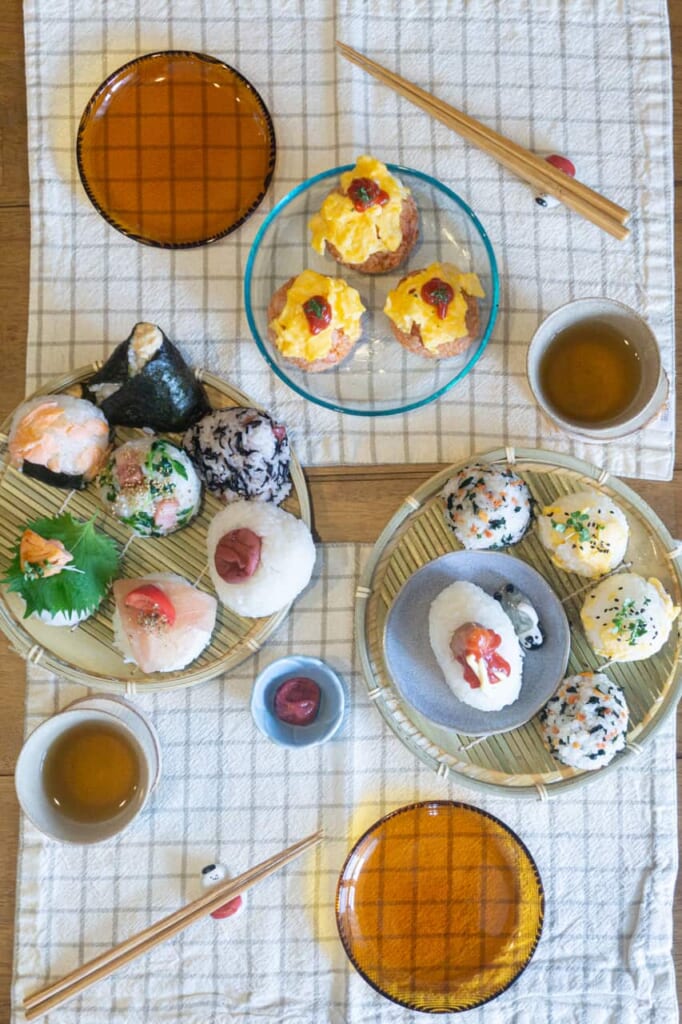


Itadakimasu: Ready to Eat!


Onigiris is an excellent way to get into Japanese food. They are easy to prepare, and they have an endless variety of combinations that can be easily adapted to seasonal ingredients from different parts of the world. So, go ahead, try a rice ball with exotic flavours and even introduce a radical change in diet to a healthier one. We hope you enjoy the recipe. Mata-ne!
Pictures by Lucía
The updated article (July 2020) and translation by Maria









